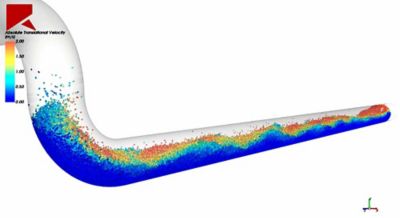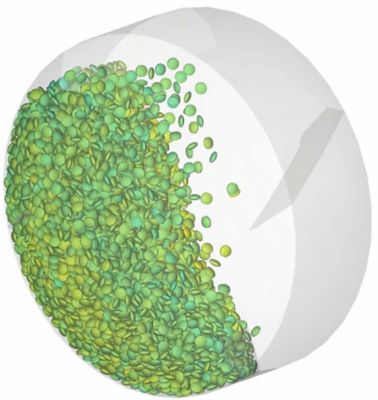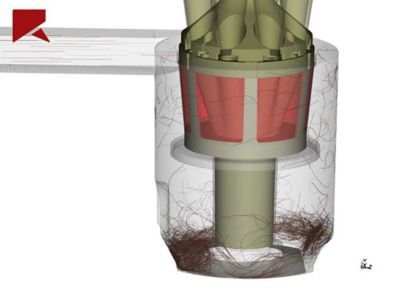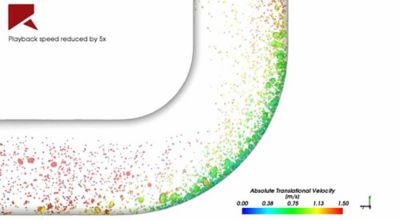-
-
Access Free Student Software
Ansys empowers the next generation of engineers
Students get free access to world-class simulation software.
-
Connect with Ansys Now!
Design your future
Connect with Ansys to explore how simulation can power your next breakthrough.
Countries & Regions
Free Trials
Products & Services
Learn
About
Back
Products & Services
Back
Learn
Ansys empowers the next generation of engineers
Students get free access to world-class simulation software.
Back
About
Design your future
Connect with Ansys to explore how simulation can power your next breakthrough.
Free Trials
Ansys Blog
September 11, 2019
Using CFD-DEM Coupling to Model Non-Spherical Particle and Fluid Flow
The world is full of particle-fluid interactions and flows. From tablet coatings, vacuum cleaners and pipe erosions, engineers need to study these applications to ensure their products are optimized.
The challenge is that traditional computational fluid dynamics (CFD) and discrete element method (DEM) software assume that particles are spherical. The world is rarely this perfect.
Simulation of particle transport in
a pipe can be used to assess erosion.
When engineers need to assess non-spherical particle-fluid interactions, they can create a multiphysics simulation by coupling CFD and DEM using Ansys Fluent and Rocky DEM, from Ansys Channel Partner ESSS.
How CFD-DEM Coupling Works
There are two ways to couple CFD-DEM models: using one-way or two-way communication.
Simulation shows how the coating of pharmaceutical
tablets will dry as hot air is injected into the system
One-way CFD-DEM coupling is typically used when simulating dilute flows. In this approach, the fluid field affects the particle flow, but the particles don’t affect the fluid flow.
Two-way CFD-DEM coupling is used when simulating dense flows. In this case, the fluid flow affects the motion of particles and the particles in turn affect the motion of the fluid.
In both approaches, all of the particles are tracked by a DEM solver using Lagrange methods. The DEM solver explicitly solves the equations that govern the particles’ motion (both translational and rotational) and energy balance. As part of the CFD-DEM coupling, these equations consider the net force and torque placed on each particle by the fluid.
In two-way coupling, the information exchange between CFD and DEM works both ways. The pressure and fluid velocities computed by Ansys Fluent are used by Rocky DEM to compute the particle phase volume fraction along with the momentum and energy exchanged between the particles and fluid phases. These values are then transferred to the CFD solver so it can update the pressure and fluid velocities. This two-way exchange of information continues, for each time step, until convergence.
The Benefits to Coupling Fluent and Rocky DEM
The main advantage to coupling Fluent and Rocky DEM is that engineers can accurately perform simulations in which particles have unique, non-spherical shapes. These simulations are better able to predict real-world behavior, because of Rocky DEM’s precise shape representations, in combination with its laws to compute fluid forces on particles.
Engineers can model various shapes, including:
- Custom convex particles
- Custom concave particles
- Flexible fibers
- Shell particles
A CFD–DEM simulation shows
how pharmaceutical tablets, with
custom shapes, are coated
Similarly, engineers can simulate adhesive and cohesive materials using one of Rocky DEM’s adhesion models.
In addition, since the DEM solver tracks each individual particle, there is a complete history of particle movement inside the domain. For instance, Rocky DEM can track particle:
- Velocities
- Temperatures
- Contact data
When this particle history is processed by Rocky DEM’s post-processing toolset, engineers can extract a high level of information from the coupled CFD-DEM simulation. This information provides insight into your application problem and ultimately reduces development costs and time to market.
For simulations that have a large number of particles, Rocky DEM can combine the processing power of multiple graphics processing units (GPUs). This means that engineers can also combine the processing power of several GPUs with Fluent’s distributed parallel processing capabilities to significantly reduce CFD-DEM simulation turnaround time.
Engineers who are conducting CFD-DEM simulations will have access to all of Rocky DEM’s features when coupling it with Fluent.
Real-World Examples of CFD-DEM Coupled Simulations
CFD-DEM simulations can be used to study various industrial and commercial applications.
For instance, CFD-DEM can simulate coating equipment. In this application, spherical particles are fluidized in air that is flowing from the bottom. These spherical particles then collide, and suspend ring-shaped particles. This simulation helps engineers to predict scenarios in which the rings will not be suspended and will fall near the gas inlet. When this happens, the rings block the gas flow and collapse the bed.
Simulation shows how ring shaped
particles are suspended within a fluidized bed
CFD-DEM coupled simulations can also model cyclonic vacuum cleaners that are designed to clean up pet hair. The movement of the hair strands in the cyclone can be simulated using a one-way coupling between Fluent and Rocky DEM’s flexible fiber particle model. This simulation can be used for conceptual device testing, which reduces the number of physical lab-tests — minimizing development time and cost.
A CFD-DEM simulation of a
Bissell cyclonic vacuum cleaner
Pharmaceutical tablet-coating devices can be modeled using two-way CFD-DEM coupling, multiple domains and non-conformal, moving meshes. Custom particle shapes can be used to accurately predict the tablet temperature as hot air flows within the equipment. The simulation enables engineers to predict the residence time and temperature distribution of particles for different operating conditions.
Simulation of a tablet-coating device
Pipe erosion can also be modeled using CFD-DEM coupling. In this oil and gas application sediments in the flow impinge on a pipe as it bends. The drag force is computed for each particle based on its shape, alignment with the flow and interactions with the pipe’s surface. This simulation can be used to determine areas in the pipe that are prone to wear.
A pipe erosion simulation
These coupled CFD-DEM simulations provide engineers with the understanding they need to optimize, predict and design related equipment and processes. If you would like to learn how to model CFD-DEM simulations, view one of the webinars in our Ansys Rocky webinar series.




